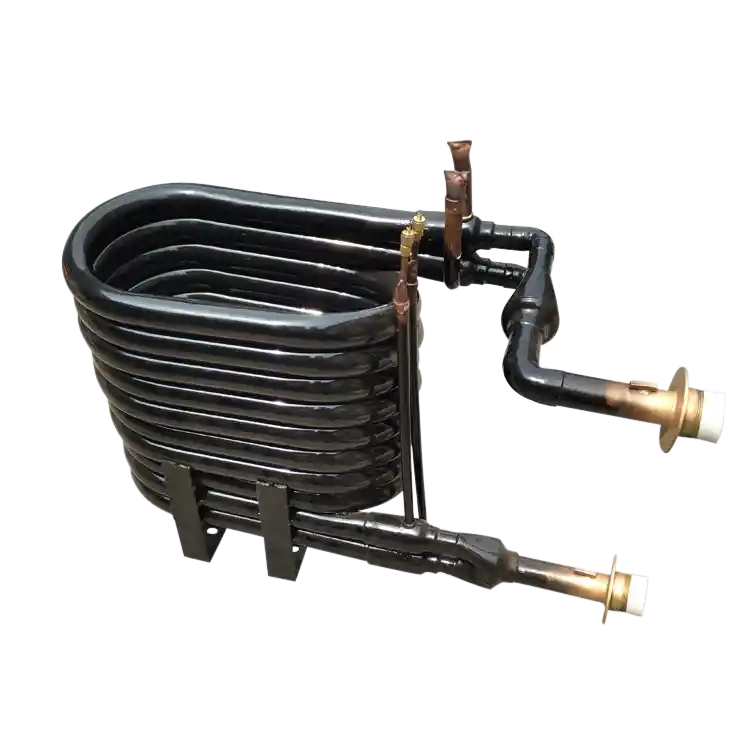1. Introduction
Sealant application is a critical step in the assembly and connection process of coaxial heat exchangers. It involves the use of specialized sealant materials to provide an additional layer of protection against leaks and ensure optimal performance. This article explores the importance of sealant application in coaxial heat exchangers, the types of sealants used, their application techniques, and considerations for achieving effective sealing.
2. Importance of Sealant Application
Sealant application serves several key purposes in coaxial heat exchangers:
2.1 Leak Prevention
Coaxial heat exchangers operate under high temperatures and pressures, making them prone to potential leaks at joints and connections. Sealants help create a reliable barrier, preventing the escape of fluids and ensuring the system’s integrity.
2.2 Enhanced Sealing Performance
Even with gaskets and other sealing components, microscopic imperfections may exist in the mating surfaces. Sealants fill these gaps, creating a tight seal and enhancing the overall sealing performance of the heat exchanger.
2.3 Corrosion Protection
Sealants can provide corrosion resistance by creating a protective layer between the metal surfaces and the fluids being handled. This is particularly important in applications where corrosive substances are present, extending the lifespan of the heat exchanger.
3. Types of Sealants
Different types of sealants are used in coaxial heat exchangers, depending on the specific requirements and operating conditions. The following are common types of sealants:
3.1 Silicone Sealants
Silicone sealants are widely used due to their excellent flexibility, adhesion, and resistance to high temperatures. They are suitable for a wide range of applications and offer good UV and weathering resistance.
3.2 Polyurethane Sealants
Polyurethane sealants provide strong adhesion and durability. They are often used in applications that require high tensile strength and resistance to chemicals and environmental factors.
3.3 Epoxy Sealants
Epoxy sealants offer excellent mechanical strength and chemical resistance. They are commonly used in applications where high bond strength and long-term durability are required.
4. Sealant Application Techniques
Proper sealant application is essential to ensure effective sealing in coaxial heat exchangers. The following steps outline the general process:
4.1 Surface Preparation
Thoroughly clean and dry the surfaces to be sealed. Remove any dirt, grease, or previous sealant residues to ensure proper adhesion.
4.2 Sealant Selection
Select the appropriate sealant based on the application requirements, such as temperature resistance, chemical compatibility, and sealing performance.
4.3 Application Method
Follow the manufacturer’s instructions for the specific sealant regarding application methods, such as using a caulk gun, brush, or squeeze bottle. Apply an even and consistent layer of sealant to the mating surfaces.
4.4 Assembly and Cure Time
Assemble the components while the sealant is still fresh. Follow the recommended cure time provided by the sealant manufacturer before subjecting the heat exchanger to operational conditions.
5. Considerations for Effective Sealant Application
To achieve effective sealant application in coaxial heat exchangers, consider the following factors:
5.1 Compatibility
Ensure the sealant is compatible with the materials being sealed, as well as the operating temperature and fluids present in the system. Consult the sealant manufacturer’s recommendations for compatibility guidelines.
5.2 Joint Design
Proper joint design, including sufficient clearance and appropriate geometry, can optimize the sealant’s effectiveness. Consider factors such as joint width, depth, and surface roughness when designing the heat exchanger.
5.3 Inspection and Maintenance
Regularly inspect the sealant for signs of degradation, wear, or failure. Perform routine maintenance to replace or repair any damaged or deteriorated sealant to maintain the integrity of the heat exchanger system.
6. Conclusion
Sealant application is a crucial step in the assembly and connection process of coaxial heat exchangers. By using the appropriate sealant materials and following proper application techniques, manufacturers can ensure effective sealing, prevent leaks, and enhance the overall performance and longevity of the heat exchanger. Understanding the different types of sealants available, considering compatibility and joint design, and conducting regular inspections and maintenance will contribute to the success of sealant application in coaxial heat exchangers.
| Sealant Type | Silicone | Polyurethane | Epoxy |
|---|---|---|---|
| Temperature Range | -40°C to +200°C | -40°C to +90°C | -50°C to +150°C |
| Adhesion Strength | Good | Excellent | Excellent |
| Chemical Resistance | Moderate | Good | Excellent |
| Cure Time | 24 hours | 24-48 hours | 48-72 hours |
| Cost | Moderate | Moderate | High |
Please note that the table provided is just an example and can be modified or expanded to include specific data and comparisons relevant to the topic.


